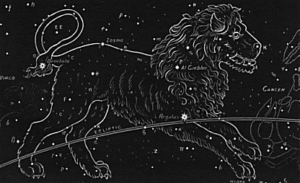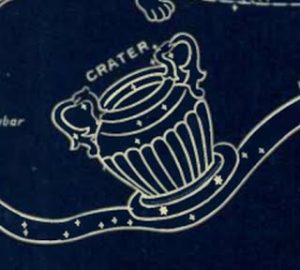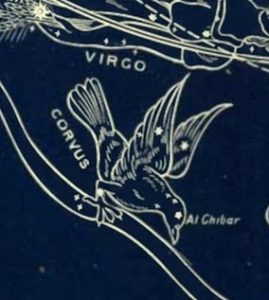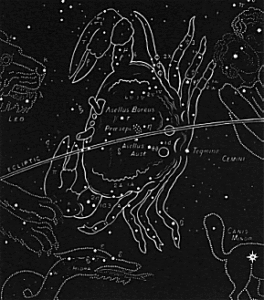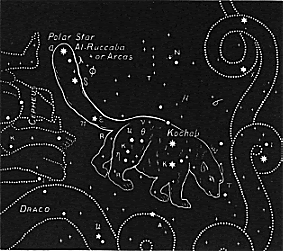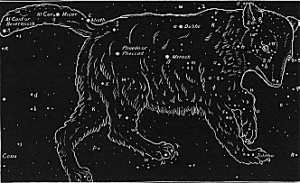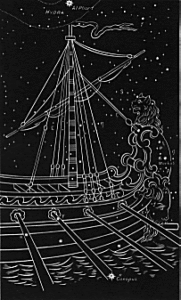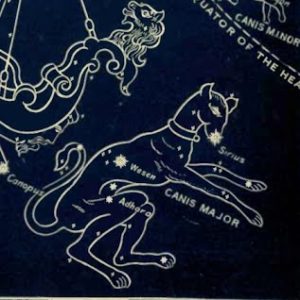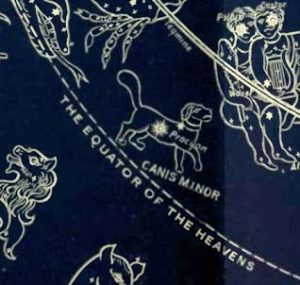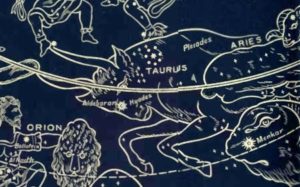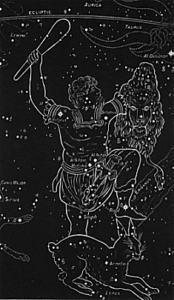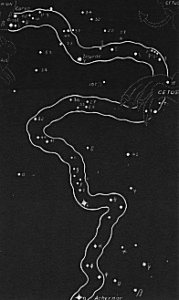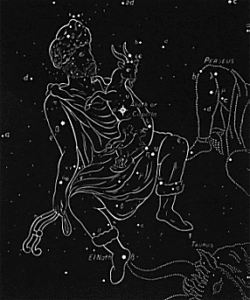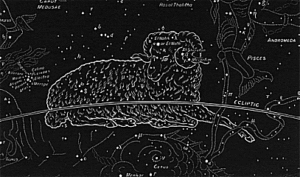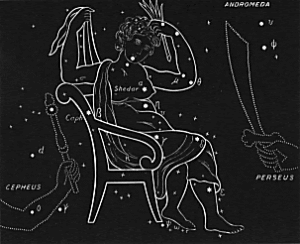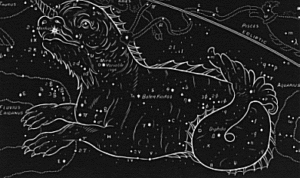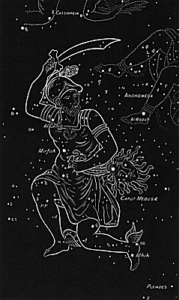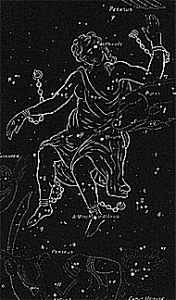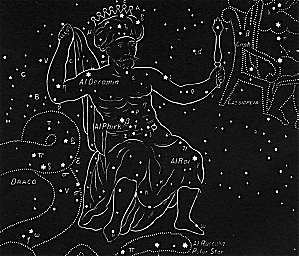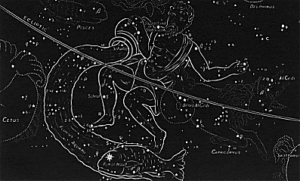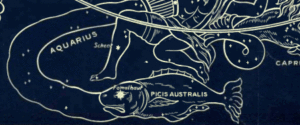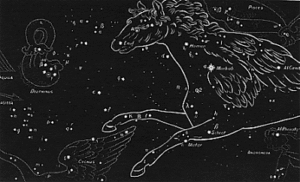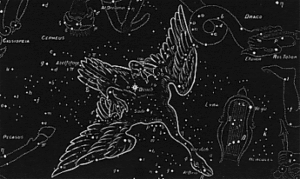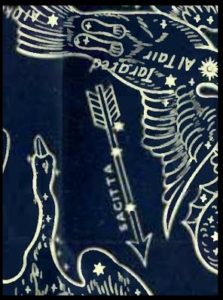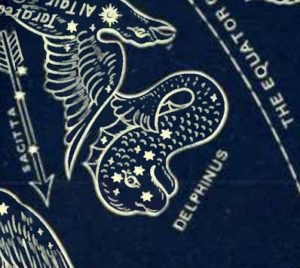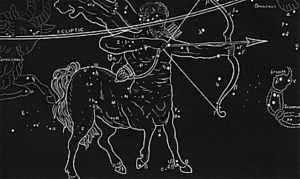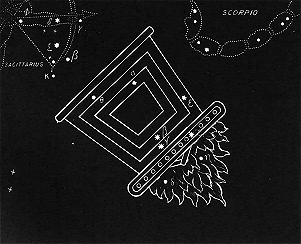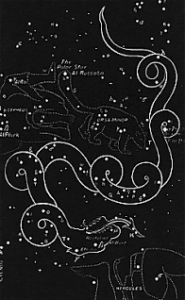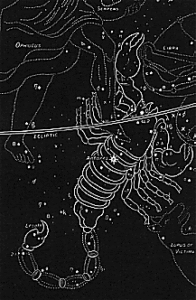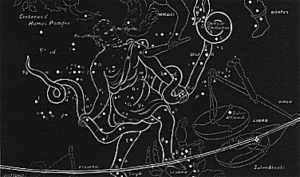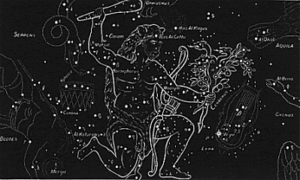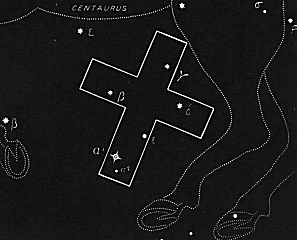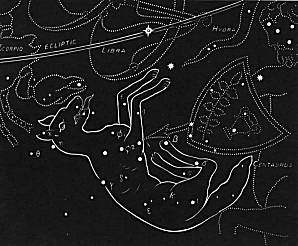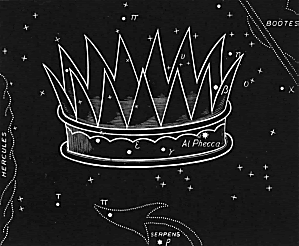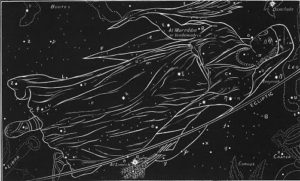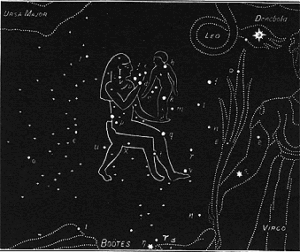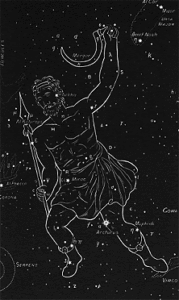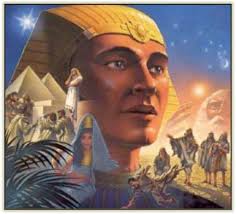Ce – The Ark is a Type of Christ 6: 13-22
The Ark is a Type of Christ
6: 13-22
The ark is a type of Christ DIG: Covenants at this time often resembled a contract between a king and his subjects in which sovereign protection is offered in exchange for faithful obedience. How is God’s covenant with Noah before the Flood like that?
REFLECT: How is the ark like Christ to you? How have you been saved from the Flood of this world? What do you want written on your headstone?
So God said to Noah . . . Throughout this long section the name of God changes. He speaks to Noah seven times as Elohim. But Noah never responds to God. The only time Noah speaks is in 9:25-27, where he curses Canaan. The concept of God speaking seven times is also seen in the voice of the LORD in Psalm 29:3-9 and in the seven thunders of Revelation 10:3-4. Here, God declares a final decree of destruction. Elohim, the God of creation and destruction said: I am going to put an end to all people, for the earth is filled with violence because of them. I am going to destroy both them and the earth (6:13). This is the beginning of the 120-year period of grace before the Flood. Mankind had participated in the destruction of His creation, now He would destroy mankind. Second Peter 3:6 echoes the same view: By these waters also the world of that time was deluged and destroyed.
Do you already get the feeling that this is not just a local problem? Did Noah and his family just live in the bad neighborhood? If you understand the reason for the Flood in 6:1-4, a localized flood makes no sense. The sole purpose of the Holy Spirit seems to be the record of the destruction of mankind. But there are those who argue for a localized flood.105 When we get to 7:17-24 I will offer twenty-five reasons why the Flood was worldwide. But even here, the plain reading of the text begs for a worldwide Flood.
Then in 6:14-16, God focuses on the ark itself. To many modern intellectuals, the ark is merely a story for children’s coloring books. But the writers of the Bible do not feel that way. In the TaNaKh, God said to the nation of Isra’el: To Me this is like the days of Noah, when I swore that the waters of Noah would never again cover the earth. So now I have sworn not to be angry with you, never to rebuke you again (Isaiah 54:9). Twice Ezekiel mentions Noah as one of the three most righteous men in history (Ezekiel 14:14 and 20). The writers of Chronicles and the gospel of Luke both include Noah in their genealogies of Christ (First Chronicles 1:4; Luke 3:36).
In the New Covenant, Peter twice mentions Noah (First Peter 3:20; Second Peter 2:3). The writer to the Hebrews lists Noah as one of the greatest historical men of faith (Hebrews 11:7). But more importantly, Jesus accepted the story of Noah and the ark as a real historical event (Matthew 24:37-39; Luke 17:26-27) and used it as an analogy of the days preceding the Rapture (First Thessalonians 4:13-18). It is also important to note that the ark itself is also listed in most of these references in the B’rit Chadashah.
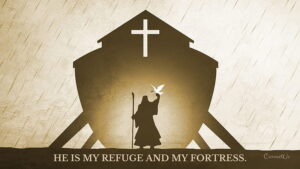
The ark is one of the clearest types of the believer’s salvation in Christ that can be found in all of the Scriptures.106 Peter saw the ark as a picture of God’s deliverance of all who believe in Him. Peter said that those in the ark were saved through the water, and this water symbolizes baptism that now saves you; it saves you by the resurrection of the Messiah (First Peter 3:30-21).
God told Noah to build an ark (6:14). God could have saved Noah without an ark, yet Ha’Shem put him to the task of building it so that the curious, on asking why it was being made, would be told and given an opportunity to repent. The word for ark is the Egyptian word teiva, which means a box. It is only used here and in Exodus 2:3-5, where the parents of the baby Moses placed him in a much smaller ark, there translated basket (see my commentary on Exodus Ak – A Man of the House of Levi Married a Levite Woman). As the ark saved Noah and seven others from a watery grave, so the basket saved the baby Moshe from a similar fate. Moses was fluent in Egyptian, and the human author of both Genesis and Exodus. These striking similarities between the story of his own deliverance and that of Noah seemed to have impressed him deeply.107 Moshe was saved from drowning to bring deliverance to Isra’el, and Noah was saved from drowning to bring deliverance to humanity.
The ark was God’s provision for Noah as Messiah is God’s provision for sinners (6:14). Before the Flood and before the ark was made, a means of salvation existed in the mind of God. He did not wait until the rain started to fall before coming up with a plan of escape. Noah was commanded to build the ark before a drop had fallen. In the same way, Christ was not an afterthought when sin entered the garden of Eden. From all eternity past Elohim intended to save His people, because Messiah was like a Lamb that was slain from the creation of the world (Revelation 13:8).108
The material out of which the ark was built teaches us an important lesson. It was to be made out of cypress wood (6:14). This lesson is brought out again and again both in nature and in Scripture. The lesson is that life comes out of death, and that life can only be secured by sacrifice. Before the ark could be made, trees needed to be cut down. That which secured the life of Noah and his family was obtained by the death of the trees. We have a hint here, too, of Christ’s humanity. The trees from which the wood of the ark was taken came from the earth, reminding us of Isaiah’s description of Christ: a root out of dry ground (Isaiah 53:2). So Messiah, who was the eternal Son of God, must become the Son of Man (see my commentary on The Life of Christ Co – Jesus Forgives and Heals a Paralyzed Man). That meant He must be made out of the dust of the earth, and as such be cut down, or in the language of prophecy, be cut off (Daniel 9:26), before He could be a place of security for us.109
The ark was a place of absolute security. God also told Noah to coat it with pitch inside and out. The fury of the waters was so great that it had to be pitched inside as well as outside. No matter how hard it rained or how high the waters rose, all inside the ark were secure; the ark is also a type of our security in Christ. The Hebrew word used here for pitch is kapher and is different from that used elsewhere in the TaNaKh. This word normally means a covering. It is the same Hebrew root for the word that is sometimes translated atonement (Leviticus 17:11), or in other instances mercy seat. So the normal meaning would be a sacrifice for sins and to provide reconciliation to God.107 Noah did not have to take care of himself because after he had entered the ark, Elohim was responsible for his protection: Then the LORD shut him in (7:16). So, it is with those who have fled to Christ for refuge (see my commentary on The Life of Christ Ms – The Eternal Security of the Believer). The covering of the pitch would save physically; whereas the covering of the blood of Messiah saves spiritually. All who entered the ark were saved from death, none had perished in the Flood.110 How this reminds us of our Lord’s words: All that the Father gives Me will come to Me, and whoever comes to Me I will never drive away. And this is the will of Him who sent Me, that I shall lose none of all that He has given Me, but raise them up at the last day (John 6:37-40).
The ark’s dimensions were truly remarkable. It was a huge barge like structure designed for capacity and floating stability rather than speed or navigability. It was a flat-bottomed rectangular vessel 450 feet long, 75 feet wide and 45 feet high (6:15), with a displacement of some 43,300 tons.111 Its 6 to 1 ratio was ideal for stability and would be almost impossible to capsize. The ark could be tilted up to just short of ninety degrees and would still right itself. Modern ocean liners hardly ever go beyond twice the length of Noah’s ark, which was the length of one and a half football fields! The King James translation of the Bible uses the term cubits instead of feet. Cubits are difficult to measure because there are several kinds of them. There is an Egyptian cubit, a Babylonian cubit and several different Hebrew cubits. But generally, it was from the tip of the elbow to the tip of the finger, or about eighteen inches. Interestingly enough, that would become the exact measurement dictated by the Pharisees for hand washing during the time of Christ (Matthew 15:2; Mark 7:3). So based upon these measurements, the ark would have been a million and a half cubic feet, and carrying 70,000 animals, it would only be about sixty percent full. The remaining forty percent would be for food and living quarters. No wonder it took 120 years to build!
It also had a window, or tzohar, which literally means an opening for light. God said: You shall make a window for the ark, and you shall finish it to a cubit from above (6:16a NKJ). A cubit would have been about eighteen inches or a foot and a half square. So the window would extend all around the ark for light and ventilation. There was probably a roof as an overhang to prevent the rain from coming in the window.
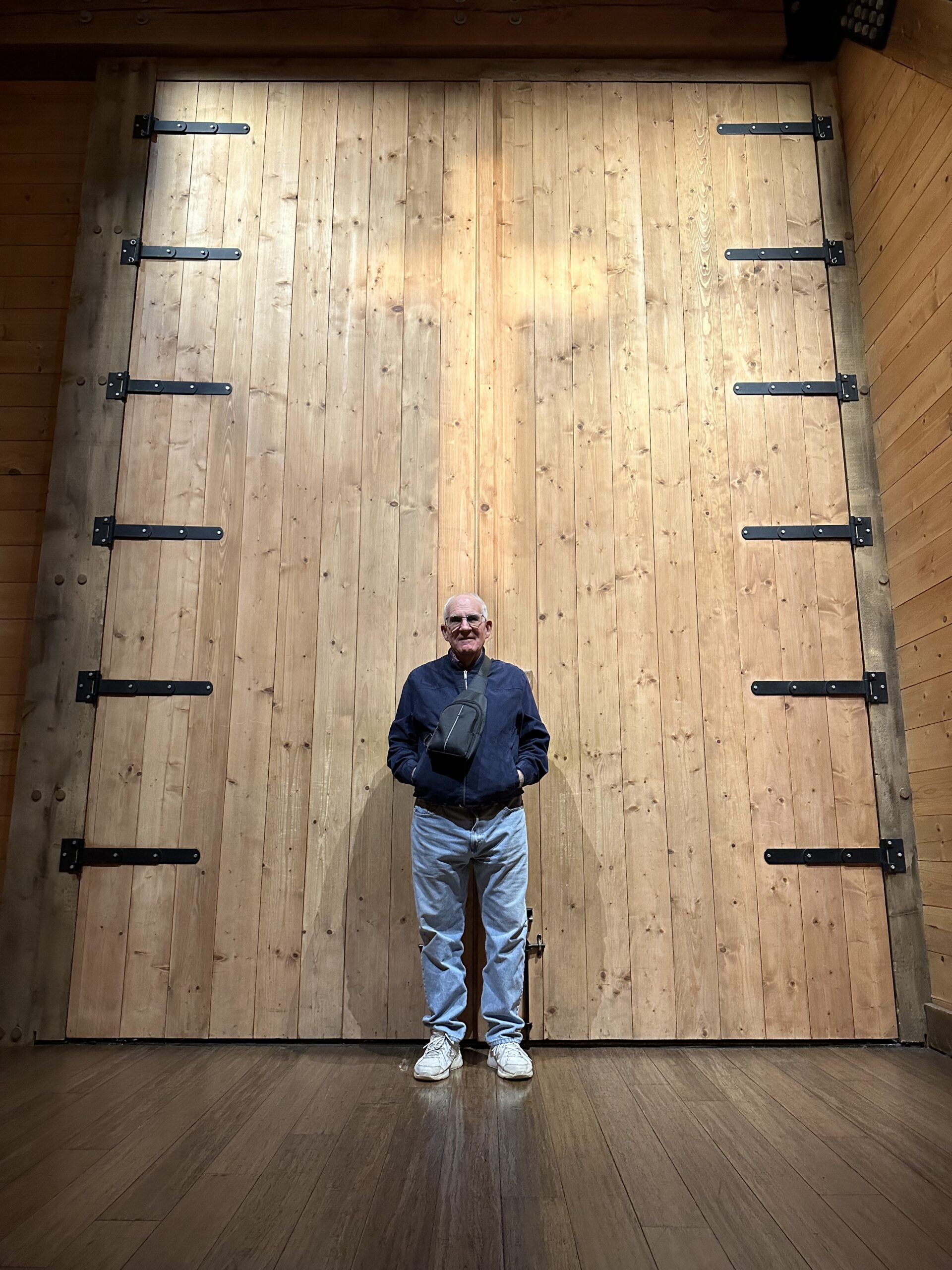
This is me standing in front of the “to scale” door of the ark at the Ark Encounter in Williamstown, Kentucky (click here to see the Ark Encounter). There was only one way into the ark. God said: Put a door in the side of the ark (6:16b). There was not one entrance for Noah and his family, another for the animals, and yet another for the birds. One door was all it had. The same was true of the Tabernacle, it had one entrance. When we look at the ark there was only one way of deliverance from the wrath to come. Likewise, there is only one Savior from the Lake of Fire, and that is the Lord Jesus Christ. He said: I AM the way, the truth and the life. No one comes to the Father except through Me (John 14:6). But more than that He says: I AM the door (John 10:9 NKJ). It was interesting to note that God ordered Noah to put the door in the side of the ark. Surely this pointed to the piercing of our Lord’s side (John 19:34), and hints that the way to the heart of ADONAI is now open to sinners.112
Finally, Noah is told what the means of destruction will be. It is Elohim, the God of creation that says to him, “I am going to bring floodwaters on the earth” (6:17a). There had never been rain or any kind of a flood before, so this was all new to Noah. The Hebrew word for flood here is mabbul, and with the definite article it is the Flood, hamabbul. This word for flood is only used of the Flood that will destroy the world and no other. Outside of Chapters 6 through 9 of Genesis, this word is only found elsewhere in Psalm 29:10 in the entire TaNaKh. So any time you see the word flood used outside these passages, it is a different Hebrew word. This shows that this Flood was unique and covered the entire world, as the plain reading of this verse clearly states. The uniqueness of this word is also seen in the New Covenant. The Greek word cataclysmos is only used of the Flood (Matthew 24:39; Luke 17:27; First Peter 2:5; Second Peter 3:6). Therefore, whether we are talking about the Hebrew word mabbul, or the Greek word cataclysmos, it shows that the Flood that will destroy the world is distinct from all other floods.
The ark was a refuge from divine judgment. The purpose of the Flood was to destroy (balah) all life under the heavens, every creature that has the breath of life in it. Everything on earth would perish, but the fish would survive because the means of judgment would be water (6:17b). The ark was a place of safety. It was the only place of deliverance from the wrath to come, and as such, it points to our Lord Yeshua the Messiah, the only Savior of lost sinners, for salvation is found in no one else, for there is no other name under heaven given to men by which we must be saved (Acts 4:12).113
In the midst of God predicting the coming Flood, He announces the coming of the covenant with Noah when He says: I will establish My covenant with you (6:18a). The details of this covenant will be given in 9:8-17. This is the first use of the word covenant, the Hebrew word berith, in the Bible. Noah wouldn’t fully understand it until after the Flood was over. It would include the promise that such a destructive Flood would never again wipe out all mankind. But implicit in its provisions would also be the divine mandate to be fruitful and increase in number, and to fill the earth and subdue it (1:28; 9:1,7). The same command that God gave when He created man would also be necessary if the earth was to be repopulated again after the Flood.114
Who would enter the ark (6:18b-21)? First of all Noah, and then his family: You and your sons and your wife and your sons’ wives with you. This is the first of five times Mrs. Noah is mentioned in the Bible (6:18; 7:7 and 13, 8:16 and 18). Noah was a spiritual giant, but a woman can get lost even in a good marriage. And among all the women in the Bible she has all but disappeared from our sight. Her story was buried with her because the story that was told was her husband’s. Despite her historic test, we don’t know too much about her – not even her name. Her single claim to fame was that she was “Noah’s wife.”
Talking about Mrs. Noah is like talking about someone you never knew. But in actuality, there are several things that we do know about her. She lived during terrible times; she was a wife; she was a survivor; and she was a first-rate mother – she brought up three godly sons, Shem, Ham and Japheth. We know that she did her duty, and did it well.
This is an important principle of the Bible. While God is concerned about the salvation of individuals, He is also concerned about their families (Genesis 17:7-27; Deuteronomy 30:19; Psalm 78:1-7, 102:28, 103:17-18, 112:1-2; Acts 2:38-39, First Corinthians 7:14). This principle is best summed up in Acts 16:31 when Paul and Silas said to the Philippian jailer: Believe in the Lord Jesus, and you will be saved – you and your household. Elohim knew in advance that only eight people would survive the Flood. None of Noah’s generation would be converted through the preaching of Noah. However, there were some believers like Methuselah and Lamech who would die before the coming of the Flood.
Noah was also to lead into the ark a minimum of two of all living creatures, male and female, to keep them alive with you. There were three categories. First, there were two of every kind of bird, and secondly, two of every kind of animal. And thirdly, two of every kind of creature that moves along the ground. Probably many of these animals were not fully grown. As we have seen, the ark was the perfect size for the animals it had to carry. The emphasis here is on pairs; later Noah will be told how many pairs of clean and unclean animals he should take with him. God tells Noah that these animals will come to you to be kept alive. Elohim would supernaturally bring these animals to Noah. Critics of the Bible say that these four men would not have had time to go out and hunt down all these animals, but they didn’t have to. God brought them into the ark.
While the animals would supernaturally come to Noah, he was responsible to gather the food for them. You are to take every kind of food that is to be eaten and store it away as food for you and for them. The purpose was to sustain life. And the chapter ends with Noah’s obedience. God spared Noah from the Flood and Noah’s response is stated so simply that it could be written on his headstone. In contrast to his disobedient society, Noah did everything just as Elohim, the God of creation and destruction, commanded him (also see 7:5, 9 and 16; Luke 17:26-27; 1 Peter 3:10; 2 Peter 2:6). The tasks given to him were monumental, and with all the criticism he must have taken, one might even say discouraging. How would you like to build the Titanic with three other guys? But Noah simply obeyed, and his obedience demonstrated his faith (Heb 11:7). It is significant that God gave so crucial a task not to an angel but to a man, and one man at that.115







